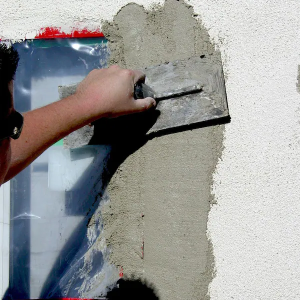Estate Sales offer a variety of items for sale. They can include everything from furniture and artwork to household goods and electronics.
Many people choose to hold an estate sale due to downsizing, moving, or the death of a loved one. The process can be overwhelming, but also rewarding. Click the Springfield MO Estate Sales to learn more.

Whether you’re looking to clear space, organize your belongings, honor memories, generate income or support the local community, estate sales offer many benefits. These unique events bring people together, help residents simplify their lives, and provide an opportunity to find hidden treasures. Estate sales can also benefit the economy by employing local workers from appraisers to movers. Furthermore, they often involve the sale of locally-owned items that have a story to tell, which helps preserve history and promotes a more sustainable way of living by giving pre-owned items new life.
Estate sales are a common method to liquidate a collection of belongings, including everyday household items and valuable antiques, due to downsizing, relocating or settling the estate of a deceased loved one. While it’s possible to organize these sales independently, hiring a professional estate sale company can add efficiency and specialized market knowledge that may expedite the process and boost returns.
A successful estate sale requires meticulous planning and organization. Proper preparations include thorough sorting and strategic pricing based on item demand, maximizing visibility with effective advertising, and designing visually appealing displays that are inviting to buyers. An attractive setup encourages browsing and minimizes buyer frustration by directing attention to high-value or unique items, boosting sales success.
On sale day, effective operation management enables staff to greet visitors and respond promptly to inquiries. A well-organized layout facilitates shopping and minimizes clutter, while a secure payment area supports safe transactions. Staff should be ready to engage in reasonable negotiations on high-ticket items and accept a variety of payments, including cash and digital options like PayPal.
As a community-focused event, estate sales are designed to be a safe and pleasant experience for everyone involved. Proper security precautions help ensure safety, especially in crowded areas where potential theft is a concern. Security teams can help to deter criminals, while public announcements and signage alert shoppers of any security risks. These measures can help ensure the safety of both the public and the estate sale staff during the event. In addition, the use of social media and local advertising ensures that the sale’s reach is vast and wide-ranging.
A Chance to Make a Positive Impact
Estate sales offer shoppers a chance to contribute to a sustainable shopping practice by reducing waste and supporting the local economy. Instead of buying new items that contribute to the exploitation of workers and waste of valuable resources, estate sale attendees can find gently used treasures at reasonable prices and support local business owners in the process.
It’s a common misconception that estate sales only occur after unfortunate events like death, but they also provide families with financial and practical advantages during life transitions. The liquidation process can help ease the emotional burden of loss, while allowing family members to honor the legacy of their loved ones by redistributing items to new homes. Additionally, estate sale companies can take care of all the legal details and time investment involved in a sale, minimizing the stress that can come with these complex situations.
Many people choose to hold estate sales because they want to simplify their living spaces. This can be particularly helpful for older individuals who are downsizing due to retirement or relocating for a job opportunity. Downsizing can be an emotionally difficult process, and an estate sale is a great way to get rid of unneeded items while also providing buyers with an affordable and convenient shopping experience.
Another reason to consider an estate sale is that it’s a great way to clear out space without contributing to landfills. When items end up in landfills, they break down over time and release toxic chemicals into the environment. By hosting or attending an estate sale, you can reduce your carbon footprint by keeping cherished items out of landfills and giving them a second life.
Estate sales also help to keep valuables out of the hands of criminals and smugglers. By selling heirlooms and unique collectibles, you can rest assured that they’re in safe hands with qualified buyers. Furthermore, you can feel good about supporting a local company that’s dedicated to ensuring the safety of all its customers. The ethical practices of estate sale companies can make them a safer and more convenient shopping alternative to traditional retail stores.
A Chance to Get a Glimpse into the Past
Estate Sales provide a fascinating window into the past. These unique shopping opportunities allow consumers to unlock hidden treasures, embrace sustainable shopping practices and connect with the past through heirlooms, vintage pieces and collectibles that add character and charm to modern homes.
People often confuse estate sales with garage sales, but the two are actually quite different. Estate sales involve the entire contents of a home and require specialized management. In addition, unlike yard or garage sales, items at estate sales are usually non-negotiable and priced according to their true value. Many estate sale companies have a team of experts who appraise items and determine their worth.
It is common for major life changes to trigger estate sales, such as a relocation, downsizing or the death of a loved one. However, it’s not always easy for family members or friends to let go of cherished belongings.
The process of liquidating an estate can be emotionally stressful for all involved. While the benefits of the sale are obvious, it is also a time for family and friends to deal with grief and loss. The proceeds from the sale can be used to pay debts or provide financial relief for a beneficiary during difficult times.
Aside from the emotional impact, estate sales can be complicated due to legal and tax considerations. In addition, some families may have specific wishes regarding the distribution of their estate. Fortunately, estate sale professionals are skilled at handling these challenges and can help to ensure that the process is as stress-free as possible for all parties.
Whether you are in search of the perfect antique to complement your living room or a piece of furniture to complete your kitchen, an estate sale is the place to find it. Just remember to bring a lot of cash with you, as most estate sales are strictly cash-only. It’s also a good idea to bring bags and boxes to make it easier to transport your purchases home. And don’t be afraid to ask the organizers if there are any items you haven’t seen or are unsure about. They are more than happy to answer your questions and can help you find the perfect item for your needs.
A Chance to Make Money
If you’re a reseller, estate sales are a great place to find items for resale. With a little bit of research and some savvy bargaining skills, you can make a pretty decent profit. Just be sure to arrive early and bring cash. Most estate sales don’t accept credit cards, and you don’t want to miss out on a deal because you don’t have enough cash.
Many people are drawn to estate sales because they offer a unique shopping experience. They provide a chance to find one-of-a-kind treasures at affordable prices, and they also support local communities by encouraging reuse and recycling. Additionally, estate sales can be a helpful way to clear out clutter and make space in your home. If you’re considering hosting an estate sale, it’s important to consult with legal and tax professionals, as there are a number of issues that can arise during the process.
A major benefit of estate sales is that they can be a good source of income for the family. If you have a large amount of valuable items to sell, it’s important to advertise the sale properly to attract a high-quality buyer base. Estate sale companies can help you advertise your sale and ensure that it’s successful. However, they do come at a cost, so be sure to compare quotes before hiring one.
Another way to maximize your profits is to set competitive prices. It’s important to price your items accurately, but you also want to encourage buyers to negotiate. This will allow you to get the most money out of your items and will also reduce the amount of unsold inventory at the end of the sale.
Estate sales can be a great way to make money and to find unique items for your home. It’s essential to plan ahead and prepare for the sale by organizing your items and cleaning them thoroughly. It’s also important to hire a professional estate sale company to handle the entire process for you. Make sure to choose a company with experience and a good reputation. You can also ask other resellers in your area for recommendations.








